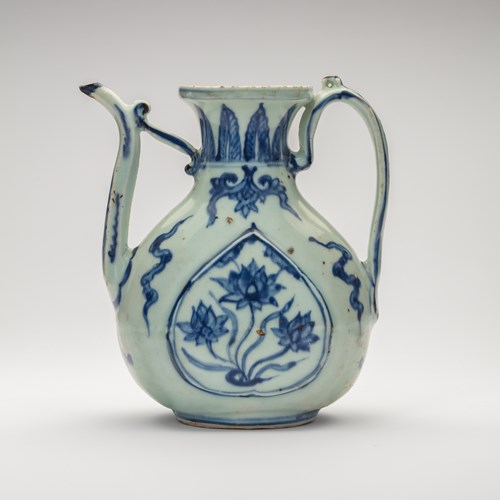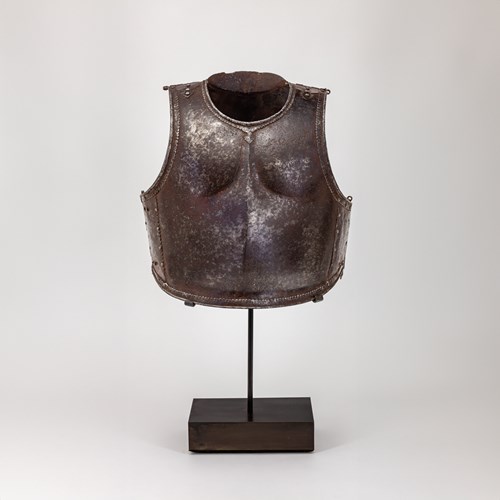Marketplace
Algerian Album of Oliver Bro de Comères - Costume, Custom, and Class
Olivier Bro de Comères
Algerian Album of Oliver Bro de Comères - Costume, Custom, and Class
This selection of portraits of women and children in Algeria comes from an album of watercolours by Olivier Bro de Comères (1813-1870), a French soldier and artist stationed in Algiers between 1833 and 1840. Olivier Bro de Comères was raised in an artistic district of Paris known as Nouvelle Athènes, where his neighbours and mentors included Théodore Géricault and Horace Vernet.
This collection documents elements of both military and civilian life during the French occupation of Algeria. The artist demonstrates great sensitivity in his portrayals of women and children from various communities and ranks within Algerian society. His keen eye for detail when illustrating fashions and decorative and architectural features is apparent throughout, as is his palpable delight in painting dashing characters such as the mercenary soldier Sidi Galfallah (see The Art of War). The sheets presented here are also remarkable for the often-extensive annotations in Olivier’s hand on the verso of many of the sheets, undoubtedly added to help him finish his sketches in detail.
The women and children depicted by Olivier in this collection provide a fascinating study of costume in different classes and religions in Algiers. His sitters are mostly the upper-class daughters of merchants from Algiers and Bône. Most of the women are from the Jewish communities in the region, who comprised ten percent of the population, with some five thousand Jewish people residing in Algiers at the end of Ottoman rule. By contrast, only a few Muslim women sat for him. Conceivably, they may have believed that it was haram to have images made of themselves. Among the few examples is the Moorish woman with her black nurse and child, dressed in the predominantly white outdoor haïk worn by the indigenous female population in Algiers. She sits sideways, in profile, avoiding the artist’s gaze while the nursemaid and child look directly at the painter.
In Algeria, the traditional attire of Jewish women consisted of a headdress known as the chéchiya, a type of brimless hat worn with a tassel on its crown; a jacket with long sleeves referred to as the ghlila djabadouli, worn by both women and men; and a dress called the djubba. Women from Constantine typically donned along-sleeved, open-front jacket crafted from violet, blue, or black velvet; satin; or silk brocade. The bust area was embellished with braiding and embroidery. Furthermore, the pinafore-style dress, the garment most often worn by many of the female figures represented by the artist, was frequently constructed from silkbrocade and featured embroidery on the bodice, usually sewn directly onto the fabric.
Costumes varied depending on the season. During the summer, the traditional jacket was substituted for a lightweight white cotton blouse and a sleeveless waistcoat, revealing the tulle sleeves of the blouse. The farmla, an alternative type of waistcoat, could also be worn in the summer months. A fouta could furtherenhance the outfit: a rectangular piece of striped fabric secured around the pelvis, obscuring the transparency of the blouse and protecting the wearer’s modesty. Many of the women wear their hair tightly bound in a ribbon, known as a kardoun. From the Arabic ‘qarad’ (to flatten), this is a traditional Algerian method of straightening the hair without heat.
While allowing for exceptions, these paintings of women and children illustrate that wealth and status, rather than ethnicity, primarily distinguish the costumes worn by the women depicted here.
This collection documents elements of both military and civilian life during the French occupation of Algeria. The artist demonstrates great sensitivity in his portrayals of women and children from various communities and ranks within Algerian society. His keen eye for detail when illustrating fashions and decorative and architectural features is apparent throughout, as is his palpable delight in painting dashing characters such as the mercenary soldier Sidi Galfallah (see The Art of War). The sheets presented here are also remarkable for the often-extensive annotations in Olivier’s hand on the verso of many of the sheets, undoubtedly added to help him finish his sketches in detail.
The women and children depicted by Olivier in this collection provide a fascinating study of costume in different classes and religions in Algiers. His sitters are mostly the upper-class daughters of merchants from Algiers and Bône. Most of the women are from the Jewish communities in the region, who comprised ten percent of the population, with some five thousand Jewish people residing in Algiers at the end of Ottoman rule. By contrast, only a few Muslim women sat for him. Conceivably, they may have believed that it was haram to have images made of themselves. Among the few examples is the Moorish woman with her black nurse and child, dressed in the predominantly white outdoor haïk worn by the indigenous female population in Algiers. She sits sideways, in profile, avoiding the artist’s gaze while the nursemaid and child look directly at the painter.
In Algeria, the traditional attire of Jewish women consisted of a headdress known as the chéchiya, a type of brimless hat worn with a tassel on its crown; a jacket with long sleeves referred to as the ghlila djabadouli, worn by both women and men; and a dress called the djubba. Women from Constantine typically donned along-sleeved, open-front jacket crafted from violet, blue, or black velvet; satin; or silk brocade. The bust area was embellished with braiding and embroidery. Furthermore, the pinafore-style dress, the garment most often worn by many of the female figures represented by the artist, was frequently constructed from silkbrocade and featured embroidery on the bodice, usually sewn directly onto the fabric.
Costumes varied depending on the season. During the summer, the traditional jacket was substituted for a lightweight white cotton blouse and a sleeveless waistcoat, revealing the tulle sleeves of the blouse. The farmla, an alternative type of waistcoat, could also be worn in the summer months. A fouta could furtherenhance the outfit: a rectangular piece of striped fabric secured around the pelvis, obscuring the transparency of the blouse and protecting the wearer’s modesty. Many of the women wear their hair tightly bound in a ribbon, known as a kardoun. From the Arabic ‘qarad’ (to flatten), this is a traditional Algerian method of straightening the hair without heat.
While allowing for exceptions, these paintings of women and children illustrate that wealth and status, rather than ethnicity, primarily distinguish the costumes worn by the women depicted here.
Plus d'œuvres d'art de la Galerie









